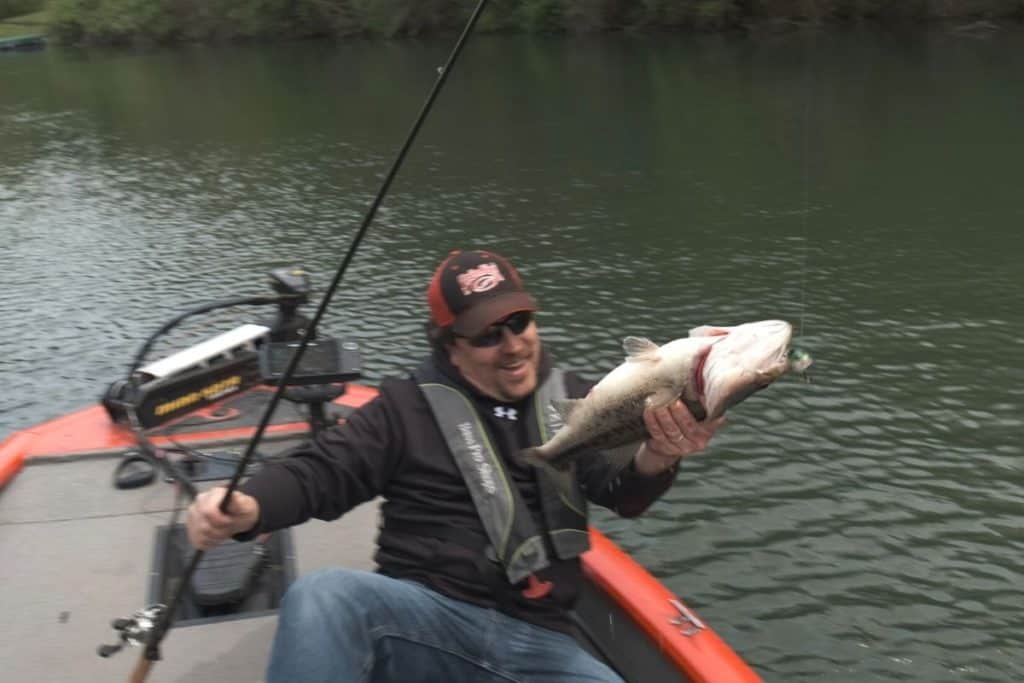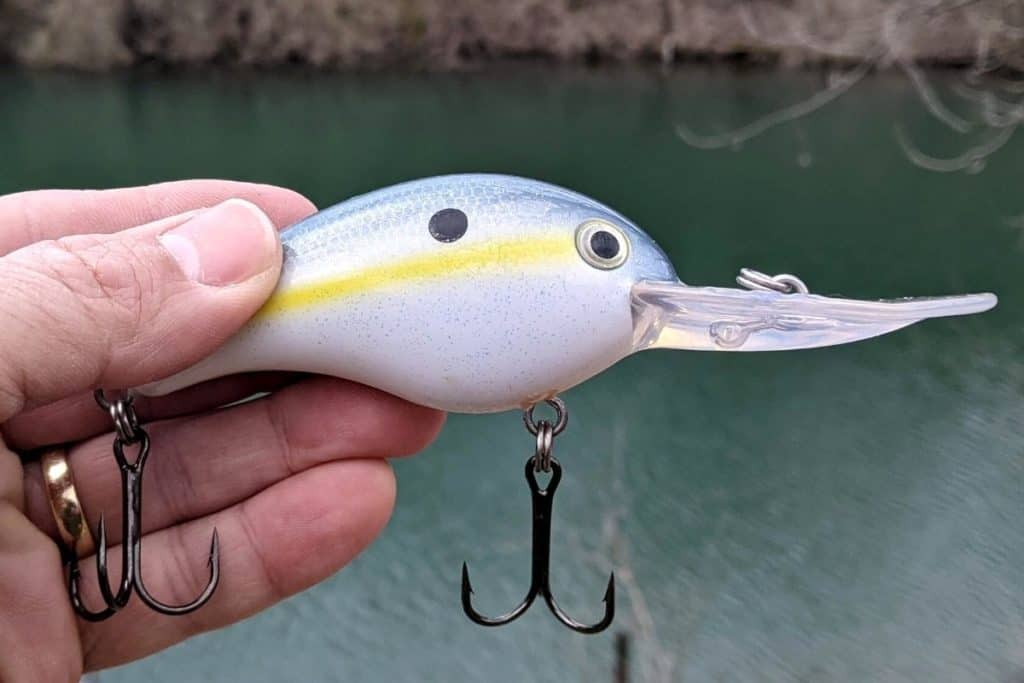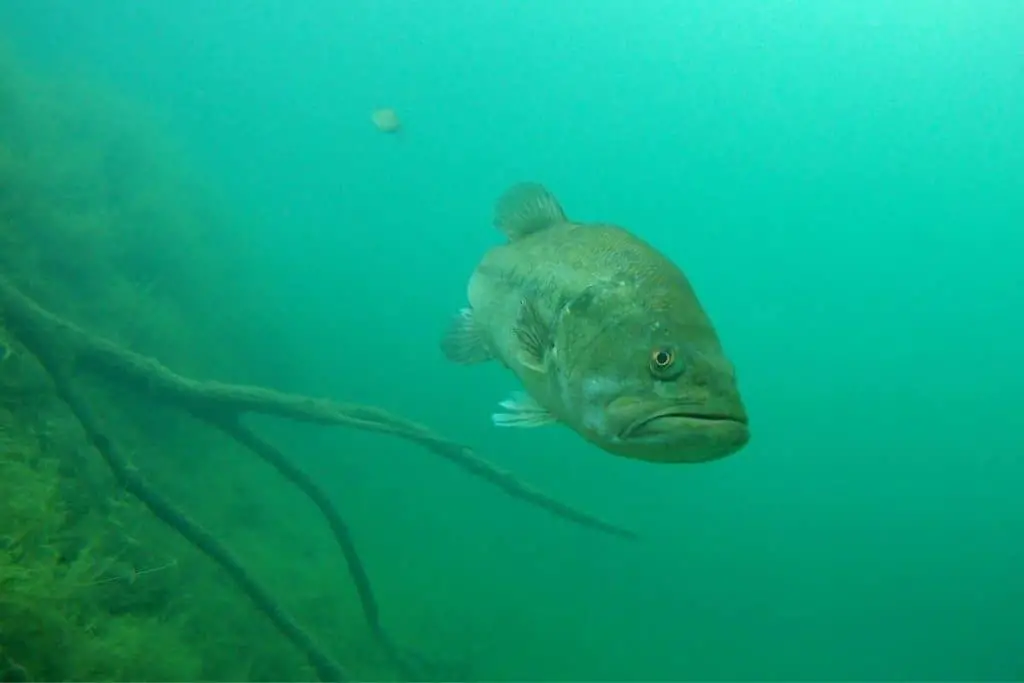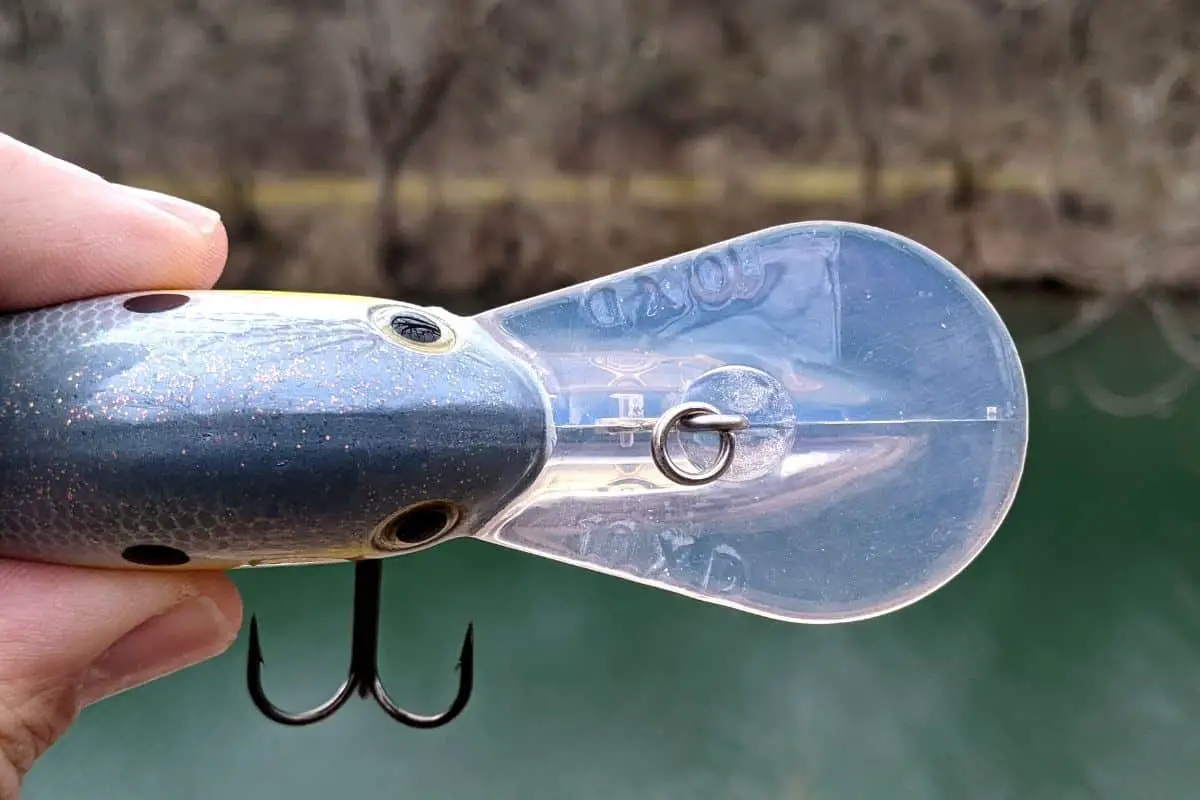There are lures and techniques that are known for catching big bass. Crankbaits fall into that category
Crankbaits tend to catch bigger bass. These lures cause inactive bass to react and eat the bait. Crankbaits also efficiently target parts of the water column that big bass use.
Understanding what a crankbait does best and where to throw them will help anglers land bigger bass more often.
Crankbaits are Excellent Search Baits
Bass anglers spend a lot of their time in the “search” mode. Fish move around and change depth constantly.
Some lures and presentations are better at locating bass than others. Crankbaits fall into that category.
I can use either squarebills or deep divers and work a shoreline, ledges, and channel breaks until a school of bass is located.
Think about it this way: search, search, search and then catch. And sometimes there is a pile of bass sitting there once you find them so the catch portion of the day is intense and memorable.
It takes a commitment by the angler to spend many casts without a bite to find that spot that is holding a pile of fish. When you locate them there is an excellent chance you will catch fish on back-to-back-to-back casts. And there may be huge bass on top of it.
Crankbaits Create Reaction Bites
This term, “reaction,” is often misunderstood in the fishing world.
It doesn’t mean ambush. In fact, bass are often categorized as ambush predators because of their tendency to react. Studies have shown that bass actively hunt when they are hungry – not ambush.
When you flip a dock post and that bass inhales it on the drop the fish is instinctively reacting to something flashing by their face.
Crankbaits are masterful lures to use when anglers want to create that reaction. The lure banging and bouncing off of cover and structure causes erratic deflections.
When the bait darts and dashes at unpredictable angles it creates a strong reaction in the bass.
I often explain that it is similar to someone that walks up to you and flicks their hand in your face. I bet you would react. In fact, you may even swat at their hands.
Bass do the same thing, They lack hands so they can only react by eating the lure or swimming off. We hope they decide to eat the lure.
(Here is an article about what triggers bass to bite.)

Crankbaits Efficiently Cover Deeper Portions of the Water Column
In this section, I’m specifically referring to deep divers.
There are few presentations that can probe the bottom of the water column as well as deep diving crankbaits. A Carolina rig is great at this, but a soft plastic lure scooting along the bottom does not elicit that strong reaction bite we are looking for.
Think about other deep-water presentations.
Something like a drop shot works the depths, but only in specific points. It is a vertical presentation by nature and is harder to cover water.
To get the most out of our deep diving crankbait retrieve, use a long crankbait rod designed for deep divers, fluorocarbon line because it sinks, and really long casts.
These three factors are important for efficiency. A crankbait is in the optimal zone for a shorter time than we realize. It takes distance to get to depth and the lure angles back towards us. We want that lure to be crawling and banging into stuff for as long as possible.
Another excellent tip is to select a crankbait that runs slightly deeper than the zone we wish to explore. If the optimal depth is 12’, then using a crankbait designed to dive to 15’ will help me out.

Bigger Bass Will Eat Big Baits – Crankbaits Excel at This
Big bass are masters of survival. Part of this requires them to take in many more calories than they burn.
Bigger meals do this.
The actual lure body on deep divers can be anywhere from 3-4” in length and also be 2-3” in height. That is a lot of surface area and it creates a big profile.
Big crankbaits mimic large shad and panfish with ease. Large bass instinctively know these meals are worth it.
As a deep diving crankbait enthusiast, there will be days when the smaller bass ignore the lure. The number of bass you catch may decrease, but the size of the fish you pull in will be photo-worthy.

Retrieval Speed is Critical When Using Deep Diving Crankbaits
While burning shallower running squarebill crankbaits is an excellent tactic for reaction bites, it does not translate to deep divers.
When using big crankbaits anglers need to think and believe that slower is better.
The dive plane of the lure is most efficient when retrieved with a lower gear ratio reel, something in that 5.2:1 range.
(Here is an entire article dedicated to gear ratios and crankbaits.)
Keeping the line retrieval at or near 21” per revolution of the reel handle is ideal. That is according to David Fritts, one of the best crankbait anglers to have ever fished.
This retrieval speed lets anglers feel what is happening as the lure digs and reflects off the lake or river bed. Finding and identifying those key areas is how we can make a successful cast-and-catch repeatable.
This most often means we found a hard spot where a school of bass are sitting. It could be a change in bottom composition or something like a shell bed. Hitting that area multiple times from different angles can produce a big bag of bass.
Good luck and make sure to encourage someone today. You never know how you may change their life forever.
Isaiah 6:8

